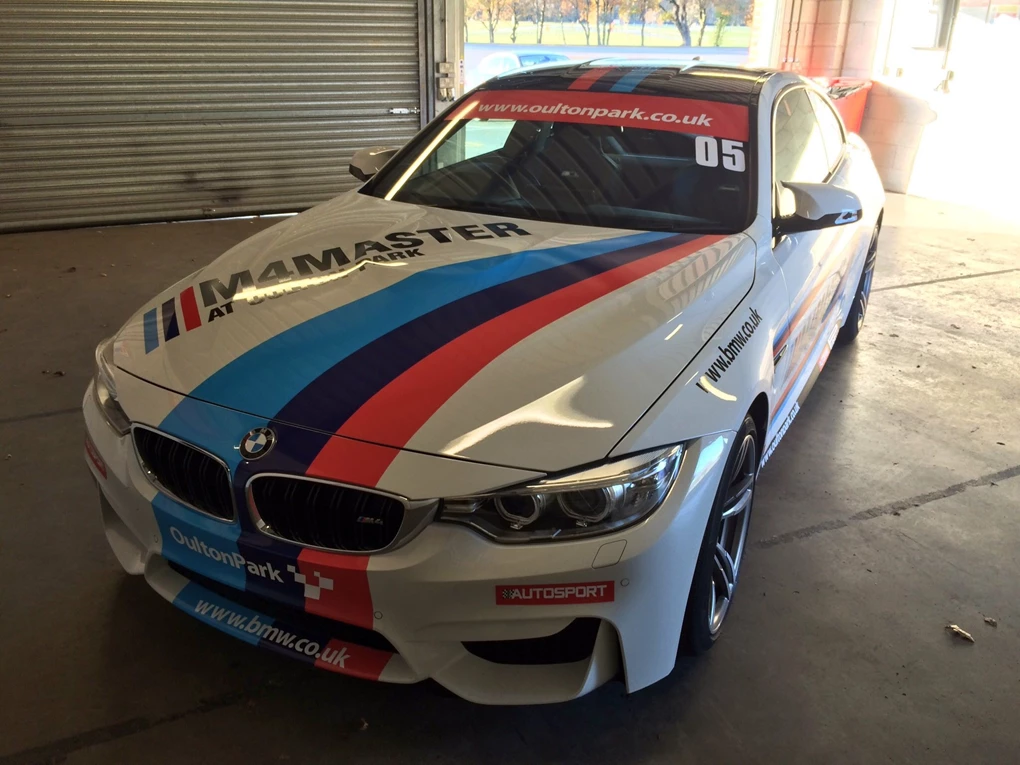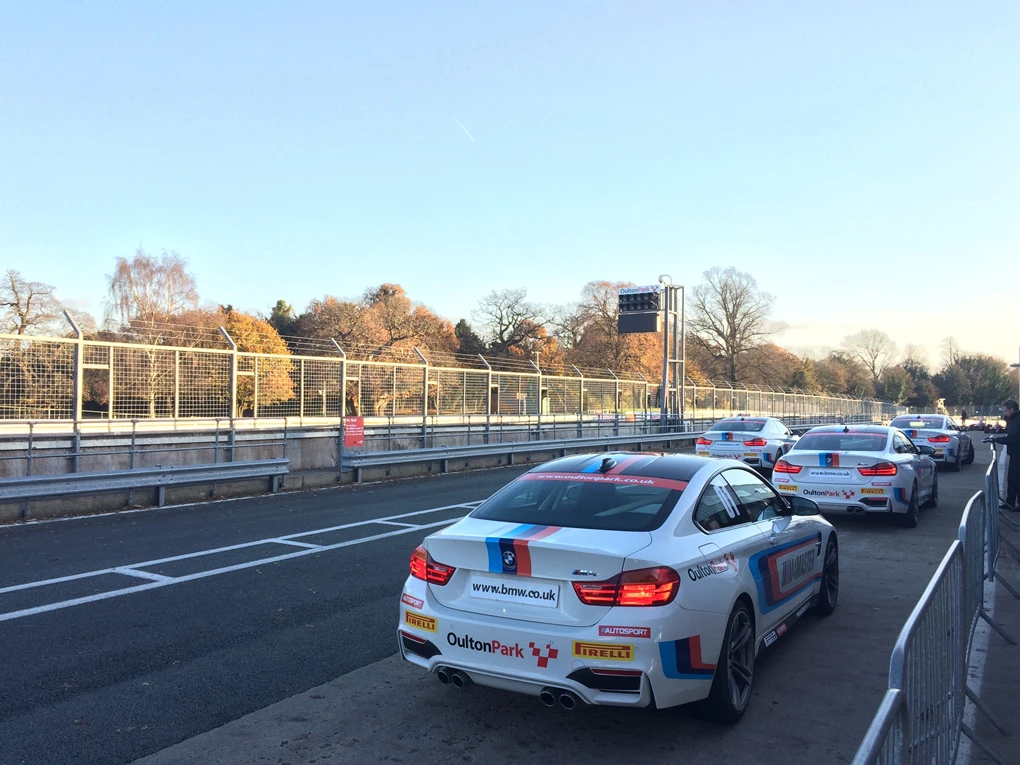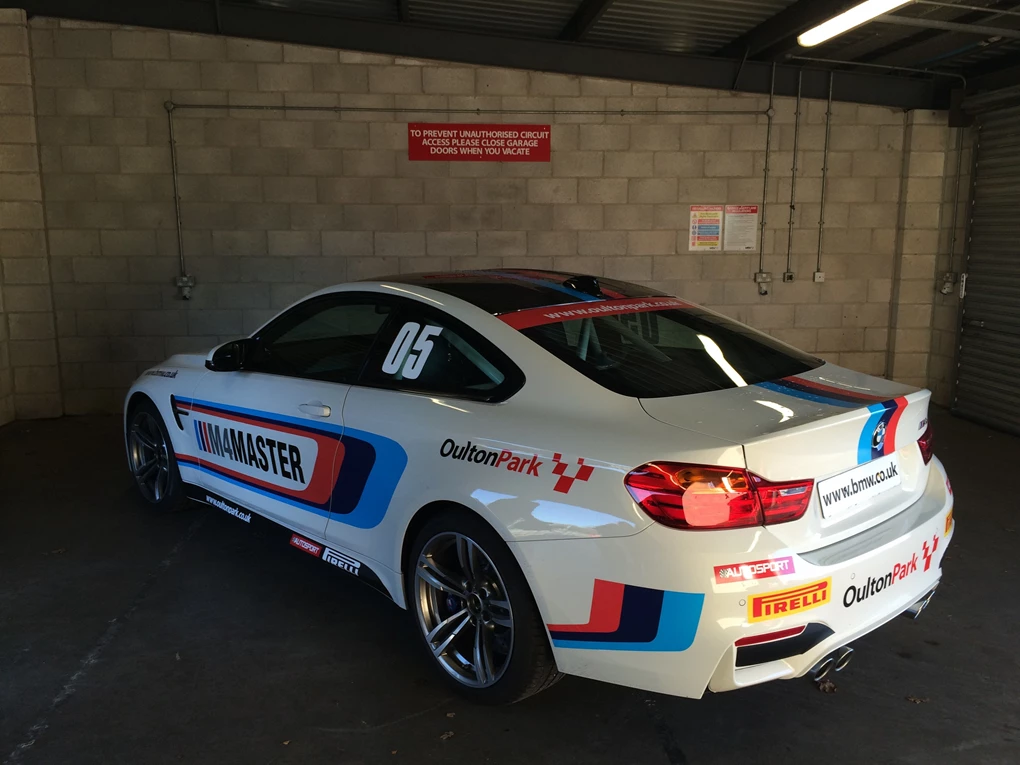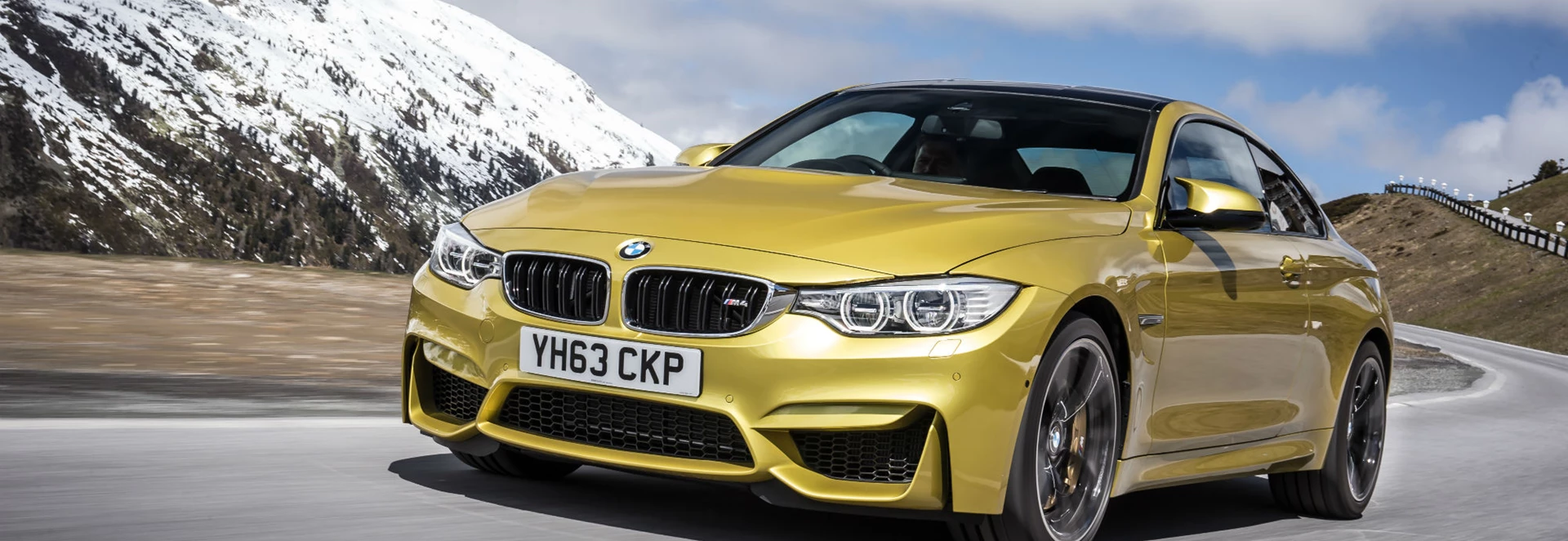After toying with the idea for several years, in 2013 BMW finally decided to split its model range down the middle. All of its two-door models would get even numbers on their nameplates, while the four-doors would get odd numbers.
The most controversial result of this new nomenclature was that the two-door version of the M3 – traditionally known as the M3 Coupe and arguably the ‘truer’ M3 – became the M4. But what’s in a name anyway, because aside from the doors the differences between the M3 and M4 are marginal.
Both feature the same muscled bodywork, both ride on vast 18-inch alloy wheels, both sport quad exhausts at the rear and engorged power bulges in the bonnet, plus both also get the same twin-turbocharged 3.0-litre engine which lurks beneath.
The arrival of said turbochargers is also the subject of some controversy among enthusiasts, as is the fact that some claim the M3 and M4 have become a bit too porky, a bit too big and a bit too considered to have the finesse of true M cars.
Is there an element of truth to that, or is the M4 – along with its M3 sibling – now better than ever? Read on to find out.

Performance
Aside from two fewer doors and a different number glued on the back, the M4 is virtually identical to its sister car. Like the M3, power now comes from BMW’s all-new twin-turbocharged 3.0-litre straight-six engine, which replaces the big V8 of the previous E92 generation cars.
As standard, it pumps out 425bhp and 500Nm of torque (though there is the option of cranking up the power to 444bhp with the Competition Package version), all of which is fed directly to the rear wheels via a six-speed manual gearbox as standard, or an optional seven-speed dual-clutch automatic.
Given that BMW’s M engineers have prioritised decreasing the M4’s weight – shedding no less than 80kg over the last model – via extensive use of carbon fibre and aluminium, the sheer grunt of this thing is jaw-droppingly ballistic.
Using the built-in Launch Control feature, the M4 will smash its way from 0-62mph in just 4.2 seconds (4.3 if you choose the manual), and can hit 100mph from a standstill in 8.6 seconds, making it as quick to triple figures as a Ferrari F430 or the first-gen Audi R8. Top speed is an electronically-limited 155mph, though you can choose to extend that to 170mph for a bit more money.
The numbers can’t quite capture the sheer sensation, though. It’s proper jowl-wobbling stuff as it leaps off the line, and it covers ground exceptionally. Do try and be smooth with the throttle though, as the sheer amount of torque available makes it extremely easy to light up the rears, even in higher gears.
Speaking of gearing, the fact that the M3 and M4 are part of a dwindling group of performance cars that still come with good ol’ manual gearboxes as standard is, for us, a cause for celebration. We do understand that many buyers will prefer the auto though, and if you’re intent on tracking your new M4 then it’s that one we’d go for.
For a start, your lap times will be quicker and the dual-clutch is as effective as you’d expect it to be. When left to its own devices it does a pretty good job of doling out the power and will certainly make driving at more sane speeds more liveable, but pull on one of the steering-mounted paddles to engage manual mode and it’ll ratchet through the cogs with a viciously physical intensity.
Bad bits? Well, newcomers to the car aren’t likely to be bothered by it, but compared against the high-revving, naturally aspirated engines of predecessors, the soundtrack of this car seems a bit tone deaf.
That’s the price you’ll pay for cramming a pair of turbochargers under the bonnet, and to compensate BMW’s engineers pipe engine sounds into the cabin through the speakers, which comes across a tad flat, lifeless and noticeably artificial.
Still, on the list of things a properly good performance car needs, noise is so far down that it’ll probably be inconsequential to many buyers. After all, this thing still goes like absolute stink and will genuinely have many supercar owners nervously glancing at their rear-view mirrors.
Ride and Handling
Perhaps most surprising of all about the cars is just how liveable they are when you’re not going at ten tenths.
BMW’s original M cars used to be specifically motorsports derived: the original E30 M3 was built to homologate the car for racing after all, but from the second-generation E36 onwards that motorsports heritage has diminished slightly. For a start, neither the new M3 or M4 models use an engine derived from a racing car, something that was a hallmark of every M car before them. Nowadays, they’re meant to serve dual purpose as luxury cars one moment and explosive, track-ready beasts the next. Don’t think for a second that it’s gone soft, though. Both the M3 and M4 feel remarkably agile and responsive for what are very big Bimmers, with crisp and direct steering and such an outrageous amount of front-end grip that it feels nigh impossible to coax the car into understeer, even when driven by the most cack-handed of drivers. It’s not without its drawbacks, as the rear can feel a bit floaty over undulations at speed and the car never feels truly locked into the road. Coupled with the lightning-speed auto gearbox and the aggro torque delivery, it’s difficult to make proper progress over anything but the flattest stretches of tarmac without at least a little bit of rearward wiggle or traction control intervention. Much like a pet Gremlin, you should avoid getting it wet too, lest you suffer the kind of snap oversteer that’ll cause the most seasoned of performance car drivers to go green at the gills – particularly if you’re driving the Competition Package or range-topping GTS versions. But, if you’re one for showboating then the M4 will happily flatter your ego. Give it a bootful of revs and a stout armful of lock and it’ll adopt the sort of sideways heroics that leaves twin snail-trails of Michelin-brand rubber in your wake and onlookers impressed and offended in equal measure. We digress, however. Like we stated earlier, the M3s and M4s of today are dual purpose machines, and perhaps most surprising of all about the cars is just how liveable they are when you’re not going at ten tenths. We’d highly recommend speccing your car with the optional Adaptive M dampers, which constantly adjust the dampers to your driving style. What that means is that when you’re stamping on the gas pedal it’ll firm up, but when you’re just mooching around the motorway it feels surprisingly civilised, while you can also adjust steering weight and how aggressive the throttle mapping is to your taste via selectable driving modes.

Interior and Equipment
The original BMW M3, introduced in 1986, still holds the record for being the car that’s won the most races in motorsports history.
Like the standard 4 Series on which its based, the interior of the M4 is well laid out, with the sort of high-quality materials and solid build you’d expect from a premium German-made car. It also comes decked out with glossy carbon detailing, an 8.8-inch iDrive infotainment system and a handy heads-up display. Like all BMWs, it gets sat-nav as standard, along with DAB radio and Bluetooth phone connectivity. You can choose to have your M4 as stripped-back or as full of luxury kit as you want, with a wide list of optional extras which includes the likes of a £675 Harman/Kardon stereo system, an in-car 4G hotspot and even the option of a TV in the infotainment screen for £825. Of course, the fact that it doesn’t have rear doors like its M3 sibling will mean that it’s slightly less practical, but the rear seats are surprisingly spacious despite the car’s sloping roofline, though lankier passengers might find their heads scraping against the roof liner. Still, for what’s essentially one of the world’s premier performance car’s it’s quite usable for daily life with a 445-litre boot that’s big enough for plenty of luggage and shopping bags. Do note that the convertible version has a smaller 370-litre boot, and is also slightly less impressive to drive.
Cost
The BMW M4 is priced from £57,065, which makes it less than £500 more expensive than the M3
To buy, the BMW M4 is priced from £57,065, which makes it less than £500 more expensive than the M3 – not much for what is, in our opinion, a much sleeker and sexier-looking car. At that price it rivals cars like the Mercedes-Benz C63 AMG, but is about £20,000 cheaper than even the basic Porsche 911 Carrera – though it’s arguably a much different sort of ownership experience than either of those cars. Do be wary of the options list though, as some of the more significant things cost a lot of money. Carbon ceramic brakes are an eye-watering £6,250, adaptive LED headlights will set you back £1,600 and opting for the automatic over the manual will cost £2,495. The use of a turbocharged engine does pay dividends, with the current M4 about 25 per cent more economical than the previous M3 Coupe. Officially, it’ll return 31.2mpg on average, with CO2 emissions of 204g/km. It’s worth noting that tax and insurance costs will be high with this car though, while you’re also likely to spend a small fortune on fuel and tyres – worthy considerations to keep in mind when pricing the car up.
Our Verdict
It says a lot about the power of BMW M that its cars are a household name amongst petrolheads, and though the M4 is a long way from the M cars of old it’s not to its detriment. Granted, the M4 isn’t exactly an easy car to pin down, nor is it easy to encapsulate its abilities and characteristics in a short summary. Hugely aggressive, it’s got a much slimmer operating spectrum than many other performance cars and can often feel like too much car for the road. But whether it’s thrilling you with its phenomenal performance or scaring the pants off you on a wet road, at least it can never be accused of being dull or boring. It’s a fantastic car to drive, brilliantly styled, surprisingly practical and also much cleaner to run than before too. Hardcore enthusiasts who prioritise the driving experience over everything else might find a purer M car experience in the smaller and cheaper M2, but in terms of both performance and all-round ability the current M3 and M4 family is perhaps better than it’s ever been.





